
Roald Dahl was a British author of popular children's literature and short stories, a poet, and wartime fighter ace. His books have sold more than 300 million copies worldwide. Dahl has been called "one of the greatest storytellers for children of the 20th century".
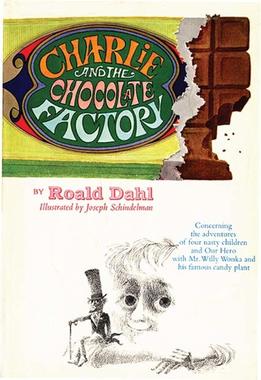
Charlie and the Chocolate Factory is a 1964 children's novel by British author Roald Dahl. The story features the adventures of young Charlie Bucket inside the chocolate factory of eccentric chocolatier Willy Wonka.

A conductor or guard is a train crew member responsible for operational and safety duties that do not involve actual operation of the train/locomotive. The conductor title is most common in North American railway operations, but the role is common worldwide under various job titles. In Commonwealth English, a conductor is also known as guard or train manager.

Sir Quentin Saxby Blake, is an English cartoonist, caricaturist, illustrator and children's writer. He has illustrated over 300 books, including 18 written by Roald Dahl, which are among his most popular works. For his lasting contribution as a children's illustrator he won the biennial international Hans Christian Andersen Award in 2002, the highest recognition available to creators of children's books. From 1999 to 2001, he was the inaugural British Children's Laureate. He is a patron of the Association of Illustrators.
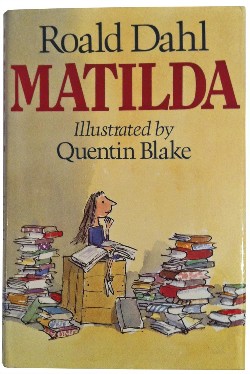
Matilda is a 1988 children's novel by British author Roald Dahl. It was published by Jonathan Cape. The story features Matilda Wormwood, a precocious child with an uncaring mother and father, and her time in school run by the tyrannical headmistress Miss Trunchbull.
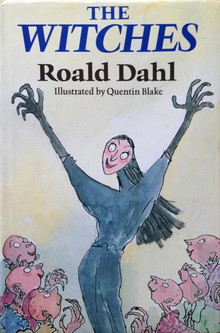
The Witches is a 1983 children's novel by British author Roald Dahl. The story is set partly in Norway and partly in England, and features the experiences of a young English boy and his Norwegian grandmother in a world where child-hating societies of witches secretly exist in every country. The witches are ruled by the vicious and powerful Grand High Witch, who arrives in England to organize her plan to turn all of the children there into mice.
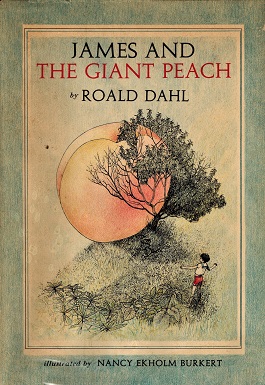
James and the Giant Peach is a popular children's novel written in 1961 by British author Roald Dahl. The first edition, published by Alfred Knopf, featured illustrations by Nancy Ekholm Burkert. There have been re-illustrated versions of it over the years, done by Michael Simeon, Emma Chichester Clark, Lane Smith and Quentin Blake. It was adapted into a film of the same name in 1996 which was directed by Henry Selick, and a musical in 2010.

The Magic Finger is a 1966 children's story by British author Roald Dahl. First published in the United States by Harper & Row with illustrations by William Pène du Bois, Allen & Unwin published the first U.K. edition in 1968. Later editions have been illustrated by Pat Marriott, Tony Ross, and Quentin Blake. The novel was adapted into a 1990 TV special on ITV (CITV).

George's Marvellous Medicine is a book written by Roald Dahl and illustrated by Quentin Blake. First published by Jonathan Cape in 1981, it features George Kranky, an eight-year-old boy who concocts his own miracle elixir to replace his tyrannical grandmother's regular prescription medicine.

Esio Trot is a 1990 children's novel by British author Roald Dahl. It was the last of Dahl's books to be published in his lifetime; he died just two months later.

The Vicar of Nibbleswicke is a children's story written by Roald Dahl and illustrated by Quentin Blake. It was first published in 1991, after Dahl's death the previous year, by Century. The protagonist is a dyslexic vicar, and the book was written to benefit the Dyslexia Institute in London, with Dahl and Blake donating their rights.
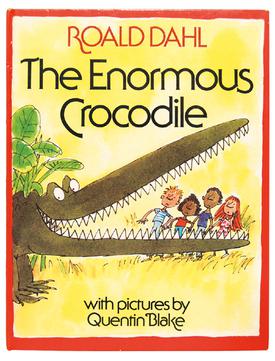
The Enormous Crocodile is a British 1978 children's story, written by Roald Dahl and illustrated by Quentin Blake, audio narrated alternately on the audio cassette and compact disc releases by Roger Blake and Stephen Fry. The story was adapted into a 1997 TV special by Abbey Home Entertainment.

The Minpins is a novel by Roald Dahl with illustrations by Patrick Benson. It was published in 1991, shortly after Dahl's death in November 1990, and is the author's final work of literature. The book was republished in 2017 under the title Billy and the Minpins with new illustrations by Dahl's primary illustrator, Quentin Blake.

The Roald Dahl Children's Gallery is a children's museum that uses characters and themes from the books of Roald Dahl to stimulate children's interest in science, history and literature.

Revolting Rhymes is a 1982 poetry collection by British author Roald Dahl. Originally published under the title Roald Dahl's Revolting Rhymes, it is a parody of traditional folk tales in verse, where Dahl gives a re-interpretation of six well-known fairy tales, featuring surprise endings in place of the traditional happily-ever-after finishes.

Rhyme Stew is a 1989 collection of poems for children by Roald Dahl, illustrated by Quentin Blake. In a sense it is a more adult version of Revolting Rhymes (1982).
"Muggle-Wump" the monkey is a fictional character in some of Roald Dahl's books for children, and "the Muggle-Wumps" are his family. A Muggle-Wump appears in The Enormous Crocodile and there is a Muggle-Wump with a family in The Twits. A Muggle-Wump lookalike appears in The Giraffe and the Pelly and Me. The first two stories have him almost as a symbol of retribution to the antagonists of the overall tale, whereas in the last one he is happy and safe.

'Way Out is a 1961 American horror, fantasy, and science fiction television anthology series hosted by writer Roald Dahl. The macabre black-and-white 25-minute shows were introduced by Dahl, his face projected in a disconcerting hall of mirrors effect, dryly delivering a brief introductory monologue, expounding on such unusual subjects as undertakers or frogs or murdering a romantic rival with ground tiger's whiskers.
Molly Leach is an American graphic designer best known for her award-winning children's books.

Roald Dahl (1916–1990) was a British author and scriptwriter, and "the most popular writer of children's books since Enid Blyton", according to Philip Howard, the literary editor of The Times. He was raised by his Norwegian mother, who took him on annual trips to Norway, where she told him the stories of trolls and witches present in the dark Scandinavian fables. Dahl was influenced by the stories, and returned to many of the themes in his children's books. His mother also nurtured a passion in the young Dahl for reading and literature.


















